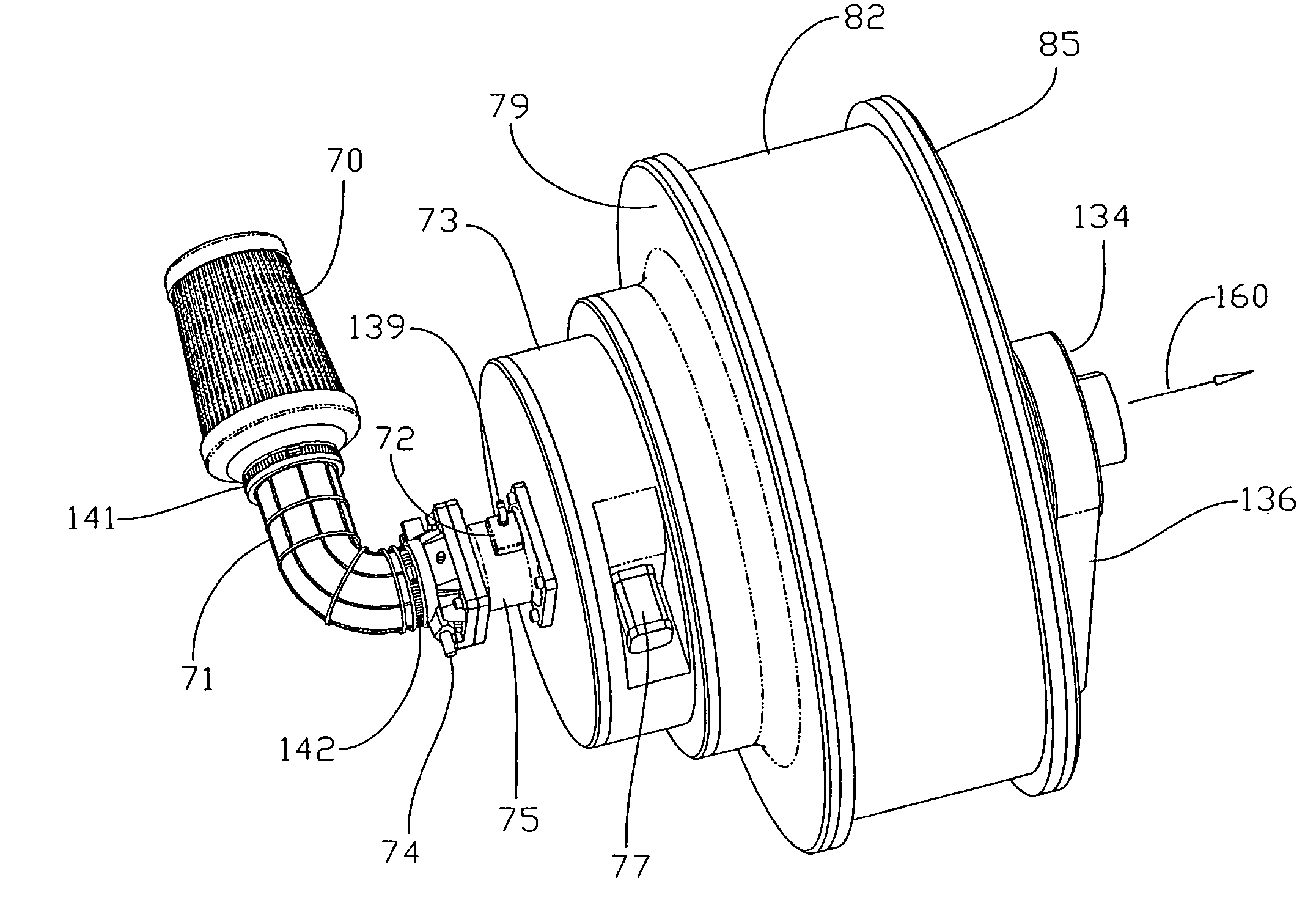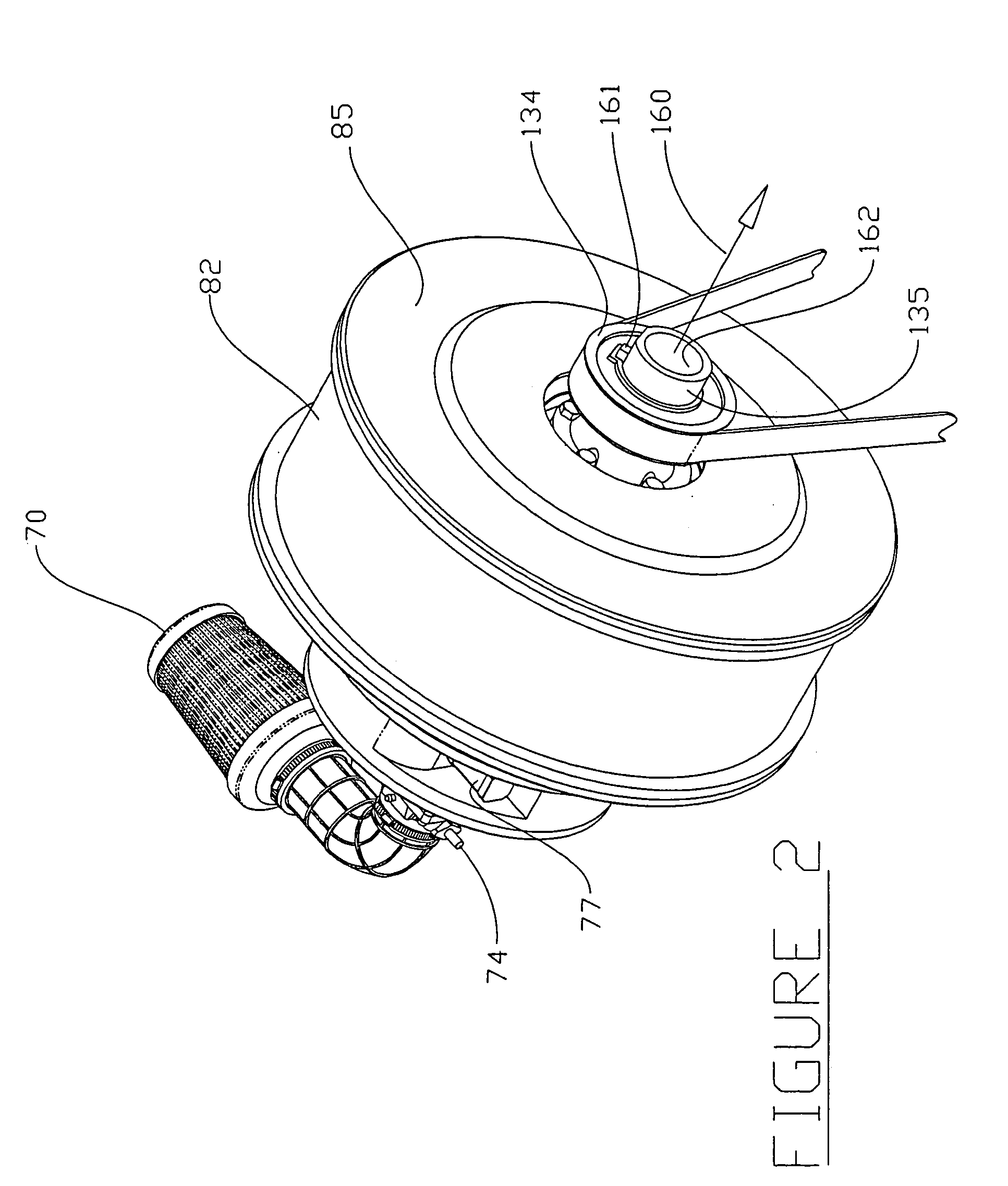Method of processing waste product into fuel
a technology of waste product and fuel, which is applied in the direction of waste based fuel, food preparation, fuel, etc., can solve the problems of deterioration of the environment, inefficiency of gasoline engines presently installed in automobiles and transportation vehicles, and obvious limited use of fossil fuels
- Summary
- Abstract
- Description
- Claims
- Application Information
AI Technical Summary
Benefits of technology
Problems solved by technology
Method used
Image
Examples
Embodiment Construction
[0081]While the preferred embodiment of the invention has been illustrated and described, it will be appreciated that various changes can be made therein without departing from the spirit and scope of the invention.
[0082]The embodiments of the invention in which an exclusive property or privilege is claimed are defined as follows:
[0083]As used herein, the following terms take the following meaning, unless otherwise indicated.
[0084]The term “E-VVORP” or “E-VVORP engine” is an acronym of Electronic Valve-less Variable Output Rotary Piston engine and refers to one embodiment of an engine formed in accordance with the present invention as disclosed in this disclosure.
[0085]The term “blending” refers to a the process of continuous, static and / or enclosed fuel blending in a device suitable for such blending that can be used to continuously blend suitable fuels such as, without limitation thereto, those described and / or listed below.
[0086]The terms “gas,”“liquid,”“solid,” and “oil,” (or th...
PUM
| Property | Measurement | Unit |
|---|---|---|
| temperature | aaaaa | aaaaa |
| pressure | aaaaa | aaaaa |
| pressure | aaaaa | aaaaa |
Abstract
Description
Claims
Application Information
 Login to View More
Login to View More - R&D
- Intellectual Property
- Life Sciences
- Materials
- Tech Scout
- Unparalleled Data Quality
- Higher Quality Content
- 60% Fewer Hallucinations
Browse by: Latest US Patents, China's latest patents, Technical Efficacy Thesaurus, Application Domain, Technology Topic, Popular Technical Reports.
© 2025 PatSnap. All rights reserved.Legal|Privacy policy|Modern Slavery Act Transparency Statement|Sitemap|About US| Contact US: help@patsnap.com



